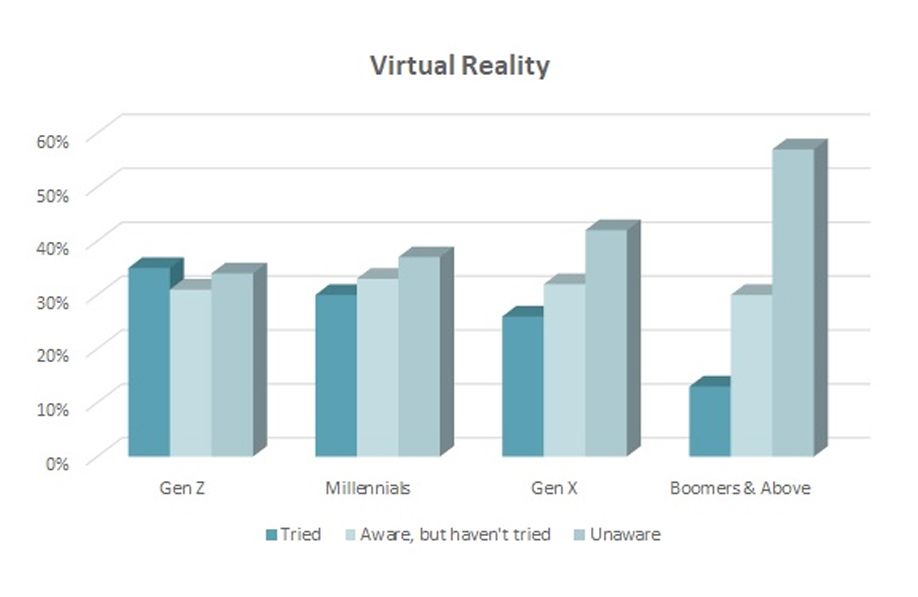While Gen X and Boomers may be struggling to figure out what the metaverse even is, Gen Z is fully immersed in it. Now, digital experts are pointing to gaming as a platform for brands to connect and interact with this generation.
This creates a unique opportunity for retail brands to establish themselves as leaders in the new virtual economy. The key is to engage with consumers with entertaining and accessible digital content that lowers the barriers to entry and meets the metaverse users where they already exist.”
Melissa Wong
CEO & Co-Founder, Zipline
“It’s not a foreign or futuristic concept for them – it’s their reality,” states a report from Razorfish, a digital marketing agency, and Vice Media, titled “The Metaverse: A View from Inside.” “Through virtual events, AR (augmented reality), gaming and other immersive experiences, the metaverse is impacting the way Gen Z thinks, acts, socializes and spends money every day.”
Among other things, the Razorfish/Vice report found that 1 in 3 Gen Z respondents would like to see virtual stores for browsing/buying products. As it is, they already buy virtual goods for their virtual experiences, and over the next five years 20 percent of Gen Z’s “fun budget” will go to the metaverse, up from 15 percent (or $50 per year) today. And whether it’s customizing their avatar or buying things that align with their values, 2 in 5 Gen Z respondents say their virtual possessions are just as important to them as their real-life possessions.
Currently, 35 percent of Gen Z consumers have tried virtually reality (VR), according to the Cotton Incorporated Coronavirus Consumer Response Surveys. That compares to 30 percent of Millennials, 26 percent of Gen X, and 13 percent of Boomers.

More than one-quarter of teens (26 percent) own a VR device, according to Piper Sandler’s “Taking Stock with Teens Survey, Fall 2022.” Weekly usage of VR devices stands at 14 percent. Meanwhile, the firm found video games constitute 12 percent of teen wallet share, and 30 percent plan to buy a next-gen console within two years.
The Razorfish/Vice report also found that 46 percent of Gen Z would like brands to provide free products and experiences in games or other metaverse areas. Another 36 percent would them to provide experiences, followed by 23 percent who would like brands to create digital worlds, and 18 percent who would like to see advertising on virtual billboards.
YPulse, the youth-focused market research consultancy, says it has long said the future of advertising is in gaming. It’s metaverse trend report shows 73 percent of young people like when brands interact with their virtual worlds, and the brands that do can be “incredibly successful” if they do it right.” This means brands can meet these consumers on platforms like Roblox games, Minecraft, and Fortnite. YPulse has found that 61 percent of young consumers agree that when brands interact with the virtual worlds they’re a part of, it makes them more likely to purchase from that brand.
“It’s a good idea for any brand that hasn’t, to start thinking of how they can,” the Ypulse team states in an article. The firm mentions how Walmart has joined the metaverse through Roblox with Walmart Land, and Universe of Play, two online worlds that offer opportunities for live events like virtual concerts, gaming and “verch” – virtual merchandise.
Meeting customers in the metaverse can help solidify a relationship that’s already been established. As it stands, mass merchants like Walmart are Gen Z’s second-most favored stores to shop for real-life clothing purchases (13 percent), right behind fast-fashion stores like Zara and Forever 21, according to Cotton Incorporated Lifestyle Monitor™ Survey. That’s followed by specialty stores like American Eagle and Gap.
Incidentally, Gap has also entered the metaverse through its Club Roblox Boutique, which will help “entice younger audiences and foster a sense of inclusion,” according to a report from Zipline, an operations platform and solutions provider. So, too, has PacSun with its PacWorld, a metaverse version of its brick-and-mortar stores “that allows users to participate in a community with exciting visual elements and activities.”
Zipline’s report says a primary challenge for retailers will be overcoming a lack of understanding of the metaverse. It suggests brands can overcome this barrier to entry through hybrid in-store experiences where augmented reality (AR) meets real life, as well as VR technologies for online shopping and engaging with friends both online and in-store. Zipline points to Lululemon, which has equipped some of its stores with AR-enabled mirrors that allow users to connect with friends.
Gen Z has significantly more experience with AR technologies compared to other generations. The Coronavirus Consumer Response Surveys shows 41 percent of Gen Z consumers have tried AR, while 34 percent are aware of it but haven’t tried it. That compares to 23 percent of Millennials who have tried it, and 30 percent who are aware of it but haven’t given it a shot. Among Gen X, 24 percent have tried AR, while 34 percent are aware of it but haven’t tried it. And Boomers are far behind, with just 5.7 percent having tried it, although 31 percent are aware of it.
A new development to keep an eye on: TikTok is adding a dedicated gaming tab to its platform. This is major, considering TikTok is already the top social media site for Gen Z, according to YPulse.
“TikTok and gaming were made for each other,” said TikTok’s Assaf Sagy, head of global gaming in a LinkedIn post. “TikTok has far shown its value in helping consumers discover what’s fun, valuable and popular.”
Zipline’s Melissa Wong, CEO and co-founder, says it’s “still very early days” for retail in the metaverse, even among Gen Z gamers.
“Nonetheless,” Wong says, “this creates a unique opportunity for retail brands to establish themselves as leaders in the new virtual economy. The key is to engage with consumers with entertaining and accessible digital content that lowers the barriers to entry and meets the metaverse users where they already exist.”
